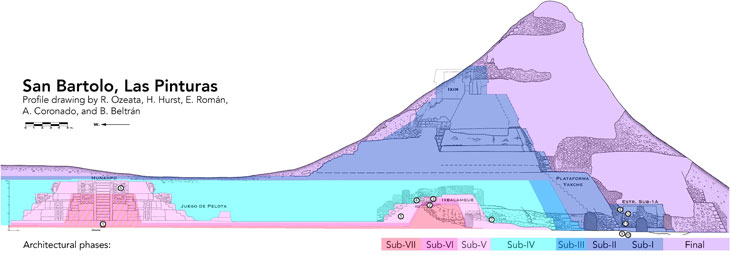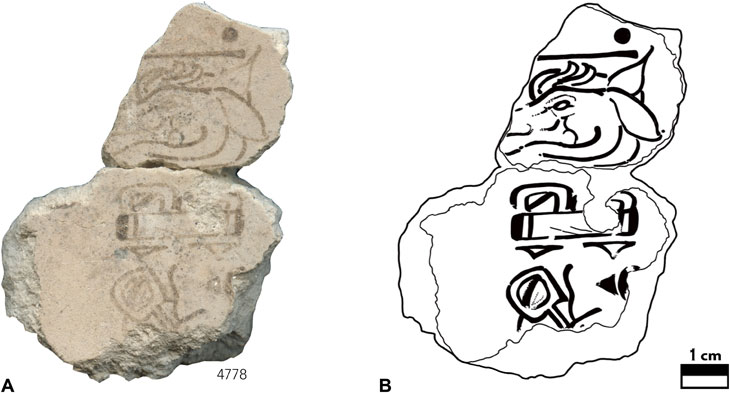During excavations at an ancient Guatemalan pyramid, archaeologists unearthed painted wall fragments that are the oldest known evidence of the 260-day sacred calendar used by the Maya.
Evocative fragments
Several ancestral Mesoamerican civilizations, including the Aztecsthe Mayansthe Mixtecs and the Zapotecsfollowed a sacred calendar system comprising cycles of 20 days (being assigned both a number and a name) which repeated themselves thirteen times in the year to reach a total of 260 days. According to historians, it was mainly used to mark important dates, organize ceremonies or try to predict future events.
While the oldest evidence of its use by these ancient peoples had so far been found on stone structures dating from around 100 BCE, recent work by researchers at theuniversity of texas showed that this type of calendar was already in force more than a century earlier.
The discovery was made at the ancient Mayan site of San Bartoloto Guatemalahousing the pyramid of ” Las Pinturas whose foundations consisted of the remains of older ceremonial structures.

By sorting the painted fragments found at its base, the researchers noticed that two of them fit together perfectly to form a hieroglyphic symbol representing a deer’s head surmounted by a point and a line, or the day ” 7 Deer of the 260-day sacred calendar. Radiocarbon dating of charcoal fragments discovered nearby determined that the symbol was painted between 300 and 200 BCE.
A new starting point
” Evidence now suggests that we can no longer point to a region of Mesoamerica, such as Oaxaca, as the point of origin of scriptures or calendar records. “, underline the authors of the study, published in the journal Science Advances. ” Our dating points to an even earlier origin of the calendar somewhere during the Middle Preclassic, if not earlier.. »
According to the team, the painted fragments came from the remains of a long platform that may also have been used by the Mayans to observe the movements of the Sun and other celestial bodies.

The 260-day calendar has long been a key element in traditional definitions of Mesoamerica as a cultural region, and its persistence in many communities until today testifies to its importance in religious and social life.
[related_posts_by_tax taxonomies=”post_tag”]
The post Oldest evidence of Mayan sacred calendar discovered in pyramid in Guatemala appeared first on Gamingsym.

